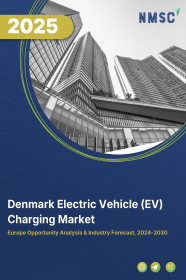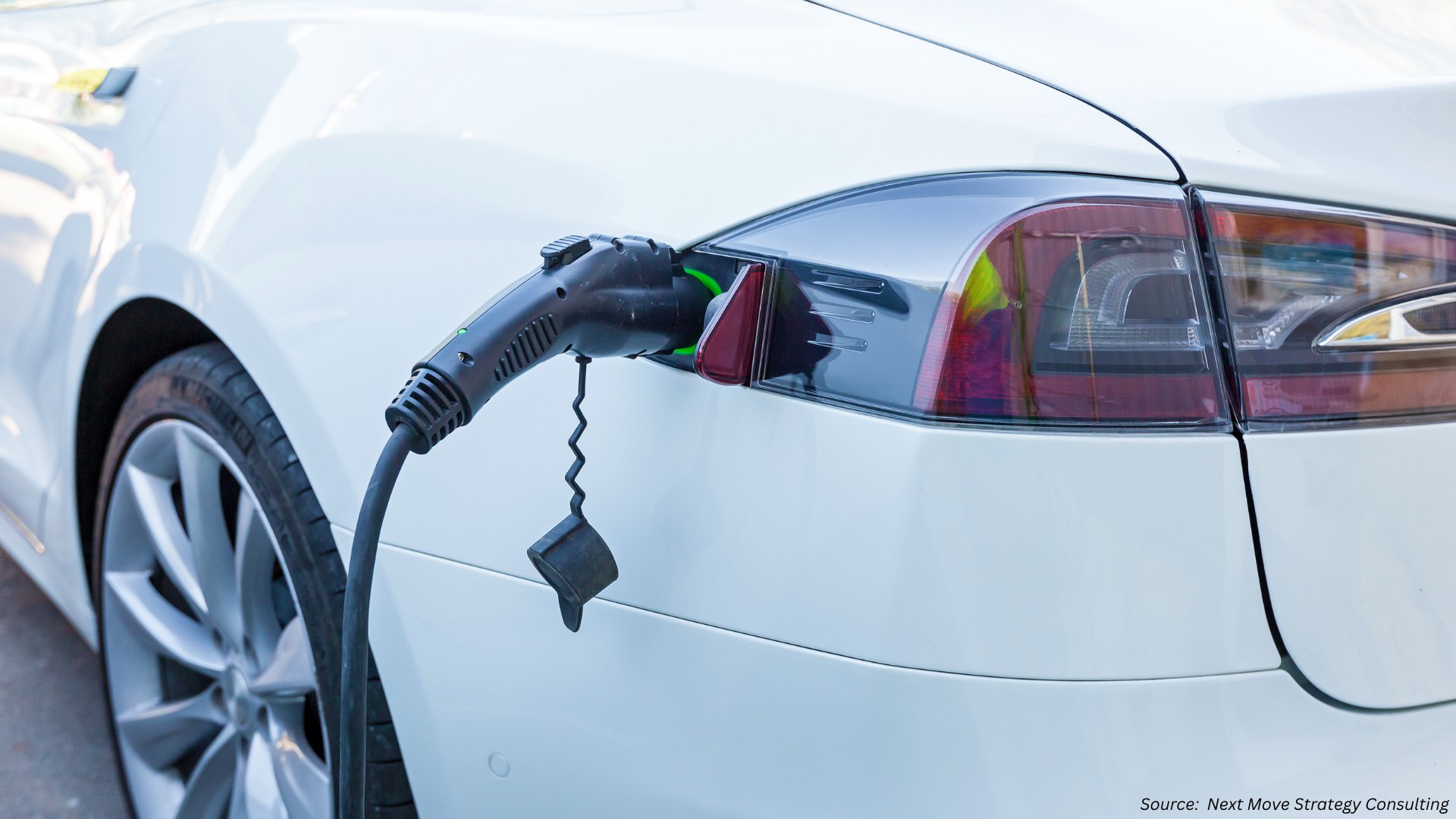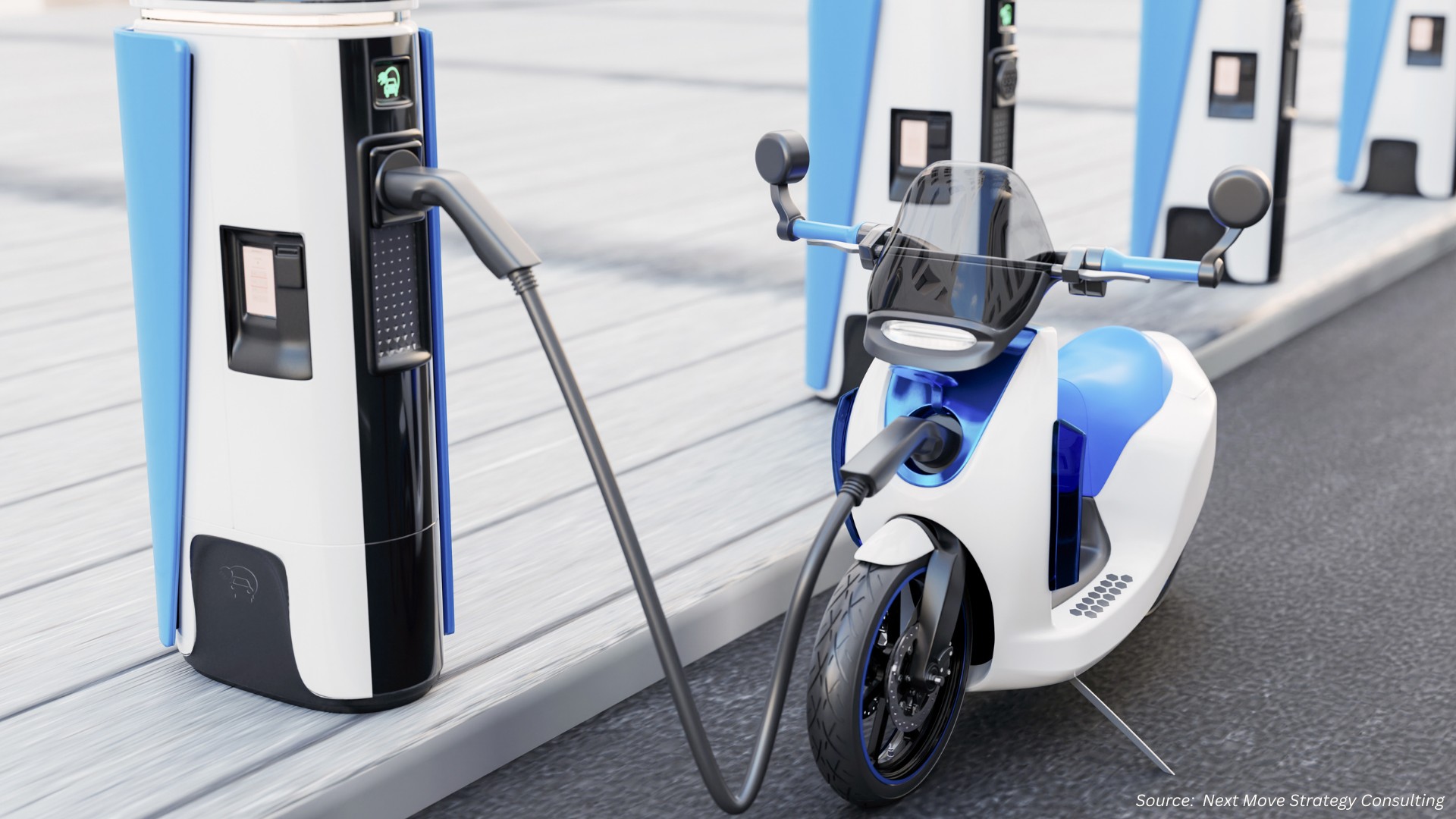
Denmark Electric Vehicle (EV) Charging Market by Type Of Charger, (AC Chargers, DC Chargers (22 kW to 350 kW)), by Charging Speed, (Level 1, Level 2, Level 3), by Connector Type, (Type 1, Type 2, CCS, CHAdeMO, Others), by Installation, (Fixed, Portable), by End User, (Commercial, Residential) – Opportunity Analysis and Industry Forecast 2023–2030
Industry: Automotive & Transportation | Publish Date: 23-Oct-2025 | No of Pages: 102 | No. of Tables: 112 | No. of Figures: 77 | Format: PDF | Report Code : AT857
Market Definition
Denmark Electric Vehicle (EV) Charging Market was valued at USD 52.11 million in 2022, and is predicted to reach USD 557.64 million by 2030, with a CAGR of 35.1% from 2023 to 2030. Electric vehicle chargers are defined by the amount of energy delivered to the vehicle’s battery per unit of time. It is an infrastructure that is used to connect the plug-in electric vehicle to an electrical outlet to charge the battery of the vehicle. Electric vehicle chargers are used to provide charging to EVs with a battery and the electrical source that helps to charge the battery.
Electric vehicles, neighborhood EVs, and plug-in hybrids can all be charged at a charging station by connecting to an electrical source. Advanced features including smart meters, cellular connectivity, and network access are available on some charging stations.
The charging of EVs can be carried out through several levels of charging such as level 1, level 2, and level 3. The higher the level of charging, the faster the charging process causing more power to be delivered to the vehicle. The use of electric vehicles significantly reduces the carbon footprints released into the atmosphere, which contain toxic gas. The growing threat of carbon emissions and other harmful gases stemming from transportation has triggered the vital necessity of adopting electric vehicles.
In addition, the penetration of EV charging is high in commercial spaces as compared to residential ones. Long-distance trips would benefit from ultra-fast charging capabilities made possible by public charging infrastructure. However, EV chargers for residential spaces offer significant growth potential as they are affordable and more convenient for charging electric vehicles as compared to commercial charging stations.
Ambitious Government Goals and Strong Policy Support Accelerate Infrastructure Expansion
The Danish government continues to play a pivotal role in driving the growth of electric vehicle charging infrastructure. Through ambitious national climate goals and long-term strategies, Denmark is creating a highly supportive policy environment for the transition to electric mobility. Financial incentives are available to encourage both households and businesses to install charging facilities, while public authorities are prioritizing widespread access to charging points in urban centers, highways, and rural areas. These measures not only stimulate investment from private players but also provide the confidence needed for sustained infrastructure development. The government’s clear roadmap for reducing transport emissions ensures that electric mobility remains a central pillar of Denmark’s sustainability agenda, directly accelerating the pace of charging network deploymen.
Strategic Infrastructure Development and Industry Collaboration Drive Market Coverage and Efficiency
The rapid expansion of Denmark’s EV charging market is also being fueled by proactive initiatives from industry leaders who are working closely with policymakers to deploy advanced charging solutions. Companies are investing in both public and private charging networks, ensuring a balance between convenience for individual EV users and support for commercial fleets. Strategic partnerships are enabling the rollout of ultra-fast charging hubs and high-capacity charging corridors, improving accessibility and reducing charging times. Innovation in technology, such as smarter grid integration and enhanced payment solutions, is helping to lower operational costs and optimize utilization. These coordinated efforts between the public and private sectors are creating a robust and reliable charging ecosystem, supporting Denmark’s vision for seamless electric mobility and setting a benchmark for sustainable transport infrastructure.
Fragmented Access and Administrative Delays Undermine Charging Network Expansion
Despite Denmark’s steady surge in EV adoption and infrastructure rollout, a notable restraint persists in the form of fragmented access and protracted administrative procedures that bottleneck the deployment of charging stations. Planning and permitting for new fast and ultra-fast chargers often involve multiple layers of municipal and regional approvals—a process that can extend far longer than the physical installation itself. These bureaucratic delays not only elevate development costs but also deter quicker network expansion, particularly in areas where infrastructure is urgently needed, such as tourist zones and rural corridors.
Compounding this, the charging market is fragmented: multiple providers maintain proprietary pricing and access models, with no unified platform to compare or streamline user experience. This complexity can frustrate EV drivers, reduce confidence in public charging, and marginally slow the market’s dynamism. To accelerate growth, Denmark must focus on administrative reform to streamline installations while fostering cohesive, interoperable access across charging providers.
Offshore Renewable Energy Integration Unlocks Denmark’s Next Phase of EV Charging Evolution
Denmark is poised to transform its EV charging landscape by aligning large-scale offshore renewable energy projects—particularly its planned energy islands and wind farms—with the development of a smart, resilient charging network. This synergy offers a unique pathway to deliver ultra-low-carbon charging at scale, balance fluctuating renewable generation with advanced grid management, and create a future-ready mobility ecosystem that seamlessly serves both passenger and commercial fleets. By integrating charging hubs with renewable power sources and energy storage systems, Denmark can accelerate infrastructure growth, enhance grid stability, and solidify its position as a European leader in combining transportation electrification with clean energy innovation. This convergence represents one of the most significant opportunities for the market’s next phase of expansion and long-term competitiveness.
Competitive Landscape
The Denmark Electric Vehicle (EV) Charging industry includes several market players such as Zaptec, Schneider Electric, Siemens, ABB, EV BOX, Wallbox, ENPHASE, Tesla, Defa, ChargePoint, and others.
Denmark Electric Vehicle (EV) Charging Market Key Segments
By Type Of Charger
-
AC Chargers
-
Mode 1 (2.3 kW)
-
Mode 2 (2.3 kW)
-
Mode 3 (3.7 kW to 22 kW)
-
-
DC Chargers (22 kW to 350 kW)
By Charging Speed
-
Level 1
-
Level 2
-
Level 3
By Connector Type
-
Type 1
-
Type 2
-
CCS
-
CHAdeMO
-
Others
By Installation
-
Fixed
-
Portable
By End User
-
Commercial
-
Commercial Public EV Charging Stations
-
Highway Charging Stations
-
Fleet Charging Stations
-
Workplace Charging Stations
-
-
Commercial Private EV Charging Stations
-
-
Residential
-
Private Homes
-
Apartments
-
Key Players
-
Zaptec
-
Schneider Electric
-
Siemens
-
ABB
-
EV BOX
-
Wallbox
-
ENPHASE
-
Tesla
-
Defa
-
ChargePoint
Report Scope and Segmentation
|
Parameters |
Details |
|
Market Size in 2022 |
USD 52.11 Million |
|
Market Volume in 2022 |
4 Thousand Units |
|
Revenue Forecast in 2030 |
USD 557.64 Million |
|
Growth Rate |
CAGR of 35.1% from 2023 to 2030 |
|
Analysis Period |
2022–2030 |
|
Base Year Considered |
2022 |
|
Forecast Period |
2023–2030 |
|
Market Size Estimation |
Million (USD) |
|
Growth Factors |
|
|
Companies Profiled |
10 |
|
Market Share |
Available for 10 companies |
|
Customization Scope |
Free customization (equivalent up to 80 working hours of analysts) after purchase. Addition or alteration to country, regional, and segment scope. |
|
Pricing and Purchase Options |
Avail customized purchase options to meet your exact research needs. |

















 Speak to Our Analyst
Speak to Our Analyst

























